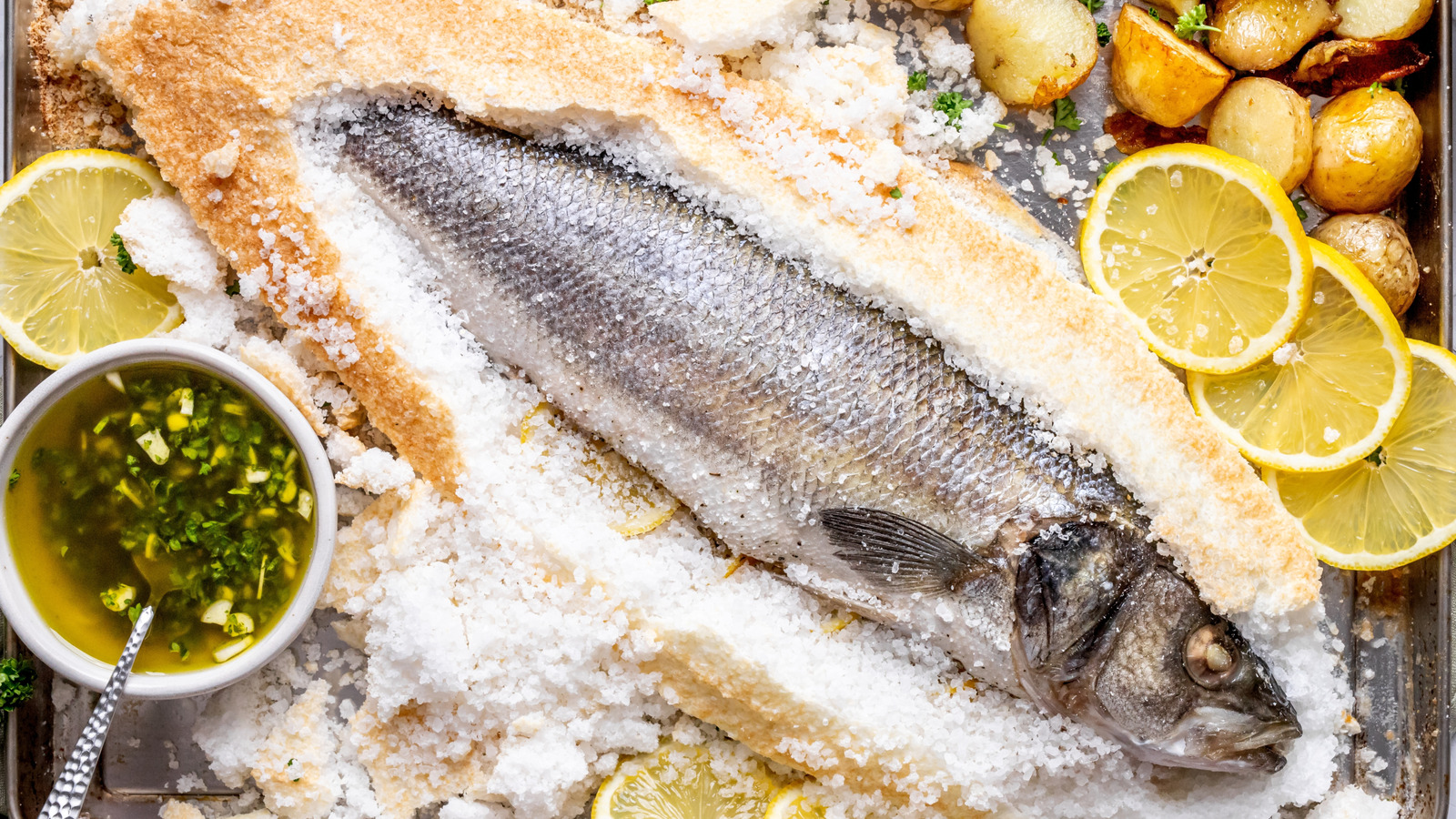
"Salt-baking is a unique but effective way to cook meat or even vegetables. The process entails completely surrounding an item in salt before cooking it to trap in moisture and really lock in the seasoning. Many different meats can be salt-baked, but the method is commonly used on whole fish, as it simplifies the process and looks visually impressive when an entire seasoned fish is placed on the dinner table. However, there is one part of a salt-baked fish that is nearly inedible: the skin."
"While most fish skins are completely safe and nutritious to eat - with some exceptions, such as the skin on skate fish and other popular deep-sea fish - all of that value is undermined by the sheer excessive saltiness of salt-baked fish skin. The taste will be replaced with that of a mouthful of ocean water, and the nutritional value is null and void thanks to the excessive amount of salt, which is bad for your heart."
Salt-baking surrounds meat or vegetables in salt to trap moisture and lock in seasoning. The method is commonly used for whole fish because it simplifies cooking and provides an impressive presentation. The salt seeps into the flesh and seasons it, but it completely coats the skin and scales, producing an overly salty, nearly inedible surface. Most fish skins are safe and nutritious, but salt-baking's excessive surface salt replaces flavor and destroys nutritional value. Excessive salt intake can harm heart health. Proper salt-baking uses a salt paste made with egg whites and water or a pressed dry salt crust, and the fish can be stuffed with aromatics before baking.
Read at Tasting Table
Unable to calculate read time
Collection
[
|
...
]